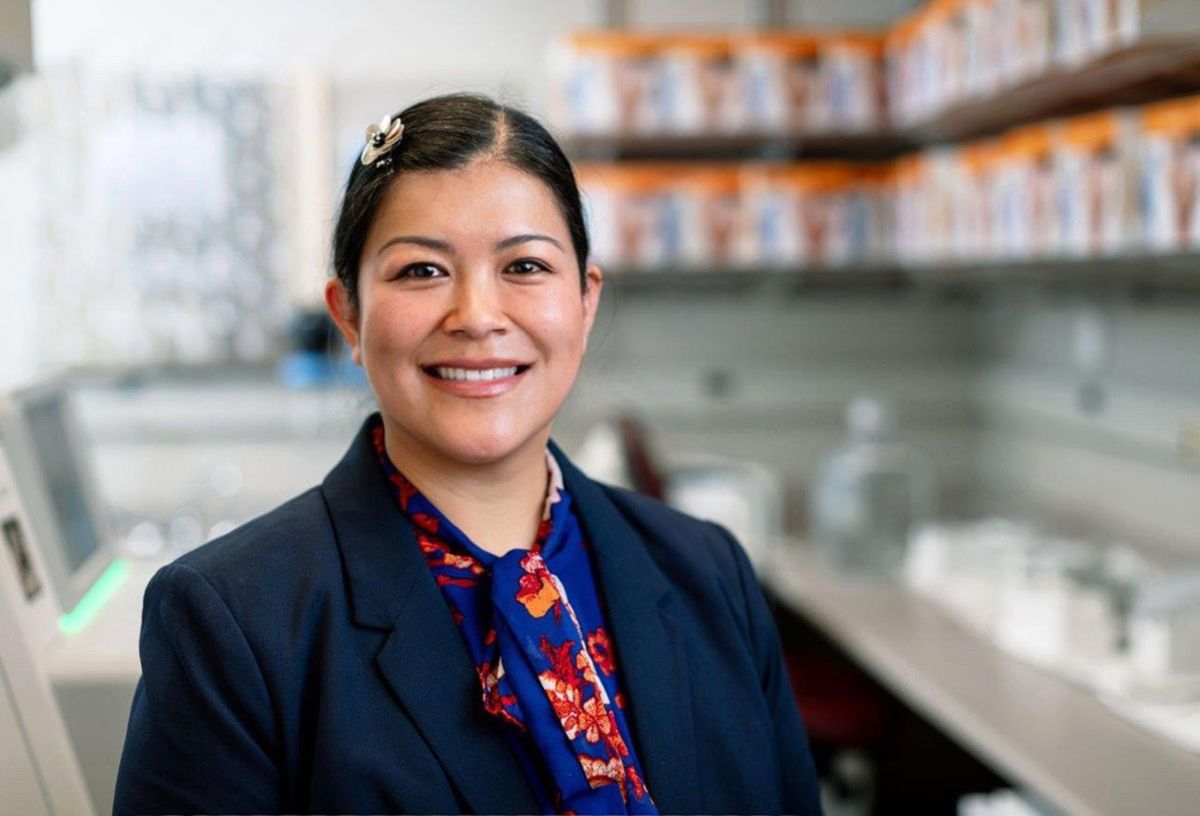Navigating Implicit Bias in Laboratory Decision-Making
Addressing implicit bias is crucial for fostering diverse and inclusive team dynamics
Implicit bias subtly influences team dynamics and decision-making in laboratories, often sidelining diverse voices and perspectives. Leaders must actively recognize and address these biases to foster an inclusive environment that leverages the full potential of their teams. Linda Hasadsri, director of the Molecular Technologies Laboratory and the chair of Equity, Inclusion, and Diversity for the Department of Laboratory Medicine and Pathology at Mayo Clinic, discusses the complexities of implicit bias and how lab leaders can minimize the negative effects of it.
Can you provide examples of how implicit bias can impact decision-making processes within laboratory teams?
A: Implicit bias can impact who is—or isn’t—included or empowered in making decisions, let alone the decision-making process itself and the resulting decisions made. For instance, a team leader may tend to gravitate toward and seek out opinions from individuals who mostly have similar backgrounds, experiences, and ideologies as their own to avoid confrontation and arrive at a decision quickly. They unknowingly seek the path of least resistance and greatest affirmation.

Team members may also attribute certain qualities to one another based on demographics such as age and education level. For instance, the opinion of a technologist who is newly graduated from a bachelor’s degree program may unknowingly not be weighted as heavily nor perceived to be as “trustworthy” as that of a technologist who obtained additional postbaccalaureate training. Likewise, individuals from previous generations may be misperceived as being less innovative, more risk-averse, or “more resistant to change,” so to speak, and therefore may be excluded from, say, decisions about future process improvements that could benefit the lab.
The decision as to who should lead a particular project or fulfill certain responsibilities might overlook a new parent with lactation needs as they’ve automatically been deemed less available and thus less “reliable,” or a non-native English speaker because it is assumed that they will take longer to comprehend and/or communicate effectively. On the other side of the coin, individuals who make up the minority of any given laboratory team may not feel as comfortable in expressing views that are opposite from the majority when group decisions need to be made, especially in labs where there is a “culture of conformity” that undervalues or even discourages diverse ways of thinking.
Because of this, a team may miss out on incredible new ideas and arrive at decisions that are suboptimal for the lab and/or on a suboptimal timeline, too. These are just a handful of general, broad brush-strokes examples, of course. There are so many ways that implicit bias—despite it being something that we’re not even consciously aware of—can negatively impact decision-making within teams and diminish equity, inclusion, and diversity (EID) in the laboratory.
What are some common challenges laboratory leaders face in recognizing and addressing implicit bias within their teams?
A: First and foremost is just knowing our own biases. We can’t recognize and address in others what we can’t acknowledge, reflect upon, and proactively seek to change about ourselves. Biases are unfortunately universal to all human beings. As with error rates in laboratory testing, we can only ever reduce them, not eliminate them.
Another challenge is continuing to find diverse individuals, or at the very least colleagues, mentors, and other connections outside of our immediate circle to start with, who can continuously provide us with feedback and help us grow in this space. This is in addition to working to promote and support the diversity within our teams themselves. The more diverse individuals we have and, just as importantly, truly empower on a team, the less likely that the team will be derailed by implicit bias. But it can be difficult to achieve this empowerment piece for so many reasons. As with recognizing our own unconscious associations, it takes time and mental energy that we often underestimate and underappreciate.
Then there is the challenge of everyone on a team, not just the lab leaders, being at different points in their EID journey. How can we meet everyone where they are at, and make sure all voices are heard when missteps or misunderstandings inevitably occur because of implicit bias? How can the team move forward in a productive and meaningful way that upholds our shared values and goals? These are the types of difficult questions we have to ask ourselves as well as others but can serve as a starting point for thoughtful dialogues to help move us in the right direction.
How can laboratory leaders create a culture of inclusivity and diversity to mitigate the effects of implicit bias?
A: It may sound cliché, but I think it’s important that laboratory leaders get comfortable with being uncomfortable and humbly solicit ongoing feedback from others, ideally from individuals of diverse backgrounds. This can help leaders to examine their own long-held beliefs, attitudes, and knowledge, and then grant themselves grace as they work toward becoming better role models based on that feedback. Let others be the gauge of how well you are achieving this, too. Remember that it’s not about you in the end, but rather about uplifting others in your sphere of influence.
Don’t be afraid to call yourself or others in once you recognize potentially harmful standards or ways of thinking and be prepared to really lean into having difficult conversations with your teammates to stop the perpetuation and reduce the negative effects of stereotypes. Encourage you and your team to practice perspective-taking and active listening. Demonstrate that you are open, inquisitive, empathetic, supportive, and genuinely want to learn and grow from—and with—your team. Creating a culture of diversity requires that we be very intentional in our efforts to recruit and retain diverse individuals. Creating a culture of inclusivity requires that we first establish a culture of curiosity as well as a culture of safety, in particular the trust and open communication that are at the core of these two deeply intertwined entities. Psychological safety is key here. If our lab members don’t feel safe enough to raise concerns and make suggestions without fear of judgment or retaliation, consider asking them to submit their ideas anonymously. This can help mitigate any implicit biases we may have toward our fellow employees. If we don’t know who the input came from, we can’t be as easily influenced by our preconceived notions about that individual.
Also, don’t be afraid to self-reflect and self-correct in real time; it’s honest and it helps reinforce that it’s OK to be imperfect but also that you’re committed to making positive change. It is both liberating for me and empowering, or at least encouraging, for those around me when I am willing to be vulnerable and share personal examples of when my own words, actions, or behaviors could use improvements at times. You just never know when those teachable moments may arise, so when they do, leverage them.
How can laboratory leaders measure progress in reducing implicit bias within their teams?
A: Surveys and frequent, inclusive conversations with our teams are so crucial for evaluating progress in this space. We can start by participating in baseline assessments of individual biases and attitudes and gathering data on our overall work culture within the lab. For example, do our lab members feel a sense of inclusion and belonging? Do they believe that their opinions are valued and appreciated? What barriers to these are they experiencing? We can then monitor the quantitative and qualitative responses to these types of questions over time, in addition to observing the actions and interpersonal dynamics of our teams in response to any interventions or even proactive initiatives that are developed in response to these engagements.
Can you share successful case studies or examples of how Mayo Clinic is addressing implicit bias within its organization?
A: Mayo Clinic is addressing implicit bias by first striving to eliminate systemic racism within the organization, along with finding, funding, further developing, and truly driving forward thoughtful and innovative ways to enhance equity and inclusion for not just our diverse patients but also our own staff. We’ve formed strategic partnerships with local diverse communities, and created a growing number of employee-led resource groups centered around many different dimensions of diversity to not just increase cultural awareness and provide subject matter expertise but also to continue cultivating a culture of empowerment, compassion, and respect.
We’ve developed a multitude of educational modules related to EID for our staff and integrated EID training into, as just one example, the year-long leadership and management course that all our residents and fellows within the Department of Laboratory Medicine and Pathology (DLMP) are required to complete. Within the past year, DLMP also launched its own EID Academy, which awards different certifications to participants based on their EID-related activities and contributions. The uptake of this program has been fantastic thus far.
In addition, Tia Baulckim, Ph.D., our DLMP director of EID, created and implemented ECHO (Education & Communication to Improve Healthcare Outcomes) Academy, an engaging series of microlearnings on EID topics such as psychological safety that are based on real cases that occurred within our labs. The fact that these modules are centered around actual incidents here at Mayo in our own department has really resonated with our participants and provided them with a unique opportunity to learn and practice applying different EID strategies in real time.
Another example of how we’re addressing implicit bias and working to reduce the negative effects of it is our biannual DLMP EID Climate Survey, which not only gives us a detailed snapshot of where progress has been made and still needs to be made but allows us to gauge how effective our resulting interventions have been over time. We also support and present an increasing number of projects related to enhancing EID at such conferences as RISE for Equity.
And, finally (though this is by no means an exhaustive list that I’ve given, of course), through the efforts of such leaders as Melanie Yrjo, our DLMP vice chair of administrative operations and also co-chair of our DLMP EID Executive Committee, we’ve successfully launched an equitable interview process (the recommendations and best practices from which are being shared in a publication that is forthcoming) that has truly helped increase the number of diverse staff over time employed by DLMP.
Bio: Linda Hasadsri, MD, PhD, DABMGG (they/she) is the director of the Molecular Technologies Laboratory and the chair of Equity, Inclusion, and Diversity (EID) for the Department of Laboratory Medicine and Pathology at Mayo Clinic in Rochester, Minnesota. They completed their M.S. in genetic counseling at California State University Northridge, followed by dual M.D. & Ph.D. degrees at the University of Illinois Urbana-Champaign, and two fellowships in clinical biochemical and clinical molecular genetics at Mayo Clinic. Dr. Hasadsri has since worked at Mayo as a board-certified clinical lab director for 9 years. Their areas of expertise include the laboratory diagnosis of inborn errors of metabolism, mitochondrial disease, carrier screening, hereditary amyloidoses, hemoglobinopathies, and hereditary epigenomics. They are also passionate about enhancing EID in testing and laboratory practices in order to best serve diverse patients’ needs.


